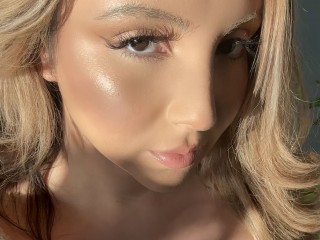
Like Liquor, Jogging, and Religion, Sex Isn’t for Everyone.
“Maybe we weren't broken after all.”
― Calista Lynne, We Awaken
Much is said about the alleged hyper-sexuality of young adults. As is so often the case, much of what is said is wrong. Study after study has revealed the surprising fact that people are having sex less often, especially young men. Despite the claims of a 2004 - 2012 “hookup culture,” there’s no proof that it led to more sex than those active during 1988 – 1996. There are a lot of suspected reasons for the decline in serial monogamy, including online diversions, COVID-19, and something called “delayed adulthood.” Nowhere is there an acknowledgment that more people self-identify as asexual, or “ace.”
While being asexual can be helpful to Catholic priests, Buddhist monks, and Hare Krishnas, it’s not the same as taking a vow of celibacy. The latter is a choice while the former is hardwired. Often accused of being gay, afraid of sex, the victim of sexual trauma, or suffering from a low libido that needs medical or psychological attention, people for whom asexuality is an intrinsic part of who they are often struggle to accept that they are, in fact, healthy and normal. Neither the media, the medical community, nor society at large have made it easy.
Called “anesthesia sexualis” in 1896 by German sexologist Magnus Hirschfeld, and “Category X” in the 1940s by sexologist Alfred Kinsey, asexuality was largely ignored by researchers outside of the gay rights movement. Then, in 1952, the American Psychiatric Association released the Diagnostic and Statistical Manual of Mental Disorders (DSM), and a new name was introduced, “hypoactive sexual desire disorder” or HSDD. It wasn’t until 2013 that the DSM-5 divided HSDD into male and female categories. Most importantly, it stated that HSDD was not an appropriate diagnosis for those who identify as sexual. In other words, the American Psychiatric Association no longer considered asexuality to be a disorder.
Since then, the study of asexuality has grown and continues to do so. There were 28 papers on the topic published between January 2020 and July 2022, for instance, according to Shelby Wren, a health equity researcher at the University of Minnesota. Despite this growing body of research, Wren’s 2020 study on the subject found that between 30 to 50 percent of respondents who had informed their therapist or doctor about their asexuality were diagnosed with a health issue such as depression, anxiety, medication, fear of sex, childhood trauma, or even a personality disorder.
More appropriate care for asexual patients was recommended in 2022 by the American Association of Sexuality Educators, Counselors, and Therapists. In a position statement, it concluded that asexuality is not a disorder or a response to trauma. Further, it observed that asexual individuals have a difficult time accessing non-judgmental health care. It recommended not pathologizing the orientation or attempting conversion therapy. Sadly, the World Health Organization’s International Classification of Diseases continues to label asexuality as a disorder.
When they are even acknowledged in the media, asexual people are often depicted as in need of repair, immature, emotionally distant, or mentally unwell. Think Jughead, Gilligan, and SpongeBob SquarePants. The idea that anyone would eschew feeling desire for or being sexual with themselves or another goes contrary to what most people are raised to think of as normal or healthy, yet here we are closing out the first quarter of the new century with science finally having mostly caught up even if society drags its collective heels.
Characters like Daryl Dixon, Todd Chavez, and Peridot. Individuals like comic Paula Poundstone, musician Kim Deal, fashion icon Tim Gunn, and former Olympian turned conservative television personality Caitlyn Jenner provide potential role models and high-profile examples of asexual adults, as well as proof that they are capable of deep committed relationships with others. They just don’t want to fuck them.
Thanks to the World Wide Web in the early 2000s, even with all its many shortcomings, asexual people throughout the planet were able to find one another and develop a kind of community with its own slang and subdivisions. BBS and website forums provided a place to discuss types of sexual and romantic attraction and whether they do or do not exist within the asexual population.
According to The Asexual Visibility & Education Network (AVEN) attraction and experience cover a spectrum. Some aces are sex-repulsed, which means exactly what it says. Some are sex-neutral and may choose to be sexual for the sake of their romantic relationships. Others are sex-positive or sex-favorable. Whether they engage in sexual activities is an individual choice.
Further complicating the lingo landscape is graysexual. Neither fully asexual nor particularly sexual, “grays” may have had sexual experiences or may occasionally feel an easily ignorable sense of arousal. The term can be useful when starting a conversation about love and desire with a potential partner. Some consider demisexuality to be a form of asexuality since it requires an emotional bond to inspire feelings of sexual attraction.
It's important to distinguish between those dealing with genuine HSDD, who can benefit from therapy and compassionate medical care, and those seeking to fulfill their emotional needs without sex because libido is not a part of their makeup. Most importantly, no matter how much or how little any one of us craves sex with ourselves or others, we are all part of a human continuum of sexuality, romance, and partnership bound together by our shared humanity.
Labels are useful for demographic studies and self-identification, but when we make them more important than the people we’re applying them to, we lose a multitude of opportunities to have meaningful relationships. Likewise, when we pathologize human behavior that we don’t understand. Instead, I recommend that we enjoy the sense of awe that comes with knowing that humans, including us, are capable of an amazing variety of ways to connect to ourselves and one another.
“I thought having a name for myself, asexual, would be the answer. It isn’t, though. I don’t just want to know myself. I want other people to know me, understand me, believe me. So that I can actually be myself.”
― Karen Wilfrid, Just Lizzie























